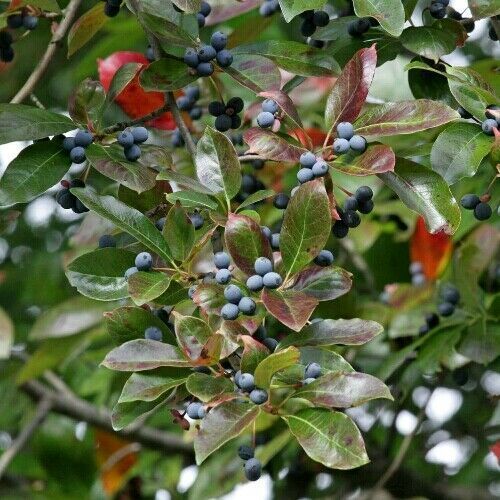
Black Gum
This is the BLACK GUM. The black gum or “tupelo” is a deciduous tree native to eastern North America, ranging from southern Ontario, south to central Florida, and west to eastern Texas. This medium-sized tree grows 60 to 80 feet tall with a canopy span of 25 to 35 feet and a trunk diameter of 20 to 40 inches. One interesting feature of this tree is that the branches typically stick out from the trunk at a 90-degree angle. The flaky, dark gray bark on the young black gum changes with age to an irregular, furrowed bark resembling alligator hide. The leaves vary in size from 2 to 4 inches long with varying shapes of oval or elliptical. The leaves are thin, enabling the tree to “glow” when sunlight passes through the leaves.
The black gum tree is one of the first trees to change colors in the fall, displaying a brilliant scarlet red color. Its bitter tasting fruit is a dark blue drupe about ½ inch long and ovoid in shape. Many wildlife species including black bear, wild turkey, white-tailed deer, and many birds include this fruit in their diets.
Commercial uses of the black gum include plywood, veneers, boxboards, handles, and paper pulp. Early American settlers used this tree to make railroad ties while Native American Indians used it to make bows.
-
Welcome, by Benjamin James
-
Bald Cypress
-
Southern Magnolia
-
Red Mulberry
-
American Sweetgum
-
Eastern Red Cedar
-
Sweetbay Magnolia
-
American Elm
-
Longleaf Pine
-
Black Gum
-
Willow Oak
-
Loblolly Pine
-
Live Oak
-
American Sycamore
-
Water Oak
-
Red Maple